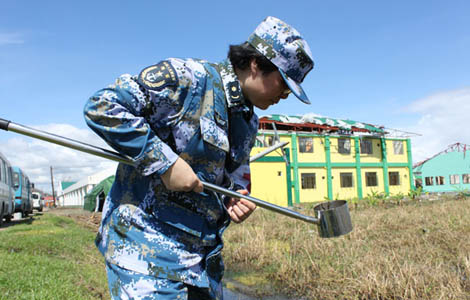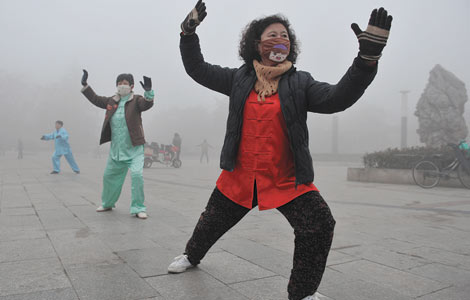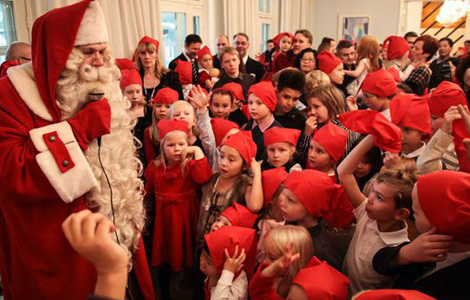Behind mystic masks
Updated: 2013-12-12 09:30
By Zhang Zixuan (China Daily)
|
|||||||||||
 |
|
Nuo Opera has evolved for centuries by blending local music and dance from all over the country. Provided to China Daily |
Nuo performers-like Cheng-were celebrated for their knowledge, and they enjoyed the highest status in the village, Wu adds.
Passed down by family or by troupe, Nuo evolved over thousands of years and spread all over China and neighboring countries such as Japan and Vietnam. Integrating with local customs and developing diversified forms, it borrowed music and percussion accompaniment from other Chinese operas during the Ming (1368-1644) and Qing (1644-1911) dynasties.
In Guizhou's Dejiang, for example, the Han-origin Nuo Opera is now performed by the Tujia people with strong Tujia-flavor singing; the more renowned Dixi Opera in Gui-zhou's Anshun, meanwhile, was actually a branch of the Nuo Opera.
Each of the 23 traditional plays (formerly 24) of Wuyuan Nuo Opera lasts from a few minutes to 20 minutes, Cheng says. They are mainly historic and mythical stories, so that roles range from gods and ancient heroes to animal ghosts. Every main figure has a unique mask.
Although played by men, there are also two female roles in Wuyuan Nuo Opera. The feminine characteristics are indicated by the masks, vocals and gestures, Cheng continues.
Three strict rules are followed by the troupe to this day:
A god-worshiping ceremony must be conducted before using any new stage;
A wooden figure representing the originator of the opera must be carried along wherever the troupe performs;
No props are allowed to be touched by anyone outside the troupe, especially women.
Related Stories
Huagu Opera performed at Cultural Festival 2013-11-13 10:17
Peking opera performed in Xi'an 2013-10-31 11:34
Kunqu Opera 'Peony Pavilion' staged in Jinan 2013-10-21 09:50
Beijing Opera troupe perform in Brazil 2013-10-22 09:52
Today's Top News
Overseas investment set for 'golden era'
No better way to protect US than surveillance
Central bank may tighten credit
Talent plan to unleash creativity
Pilots must qualify to land in haze
'Containing China' a Japan's strategy
Perks targeted in anti-graft drive
China announces holiday dates for 2014
Hot Topics
Lunar probe , China growth forecasts, Emission rules get tougher, China seen through 'colored lens', International board,
Editor's Picks

|

|

|

|

|

|







